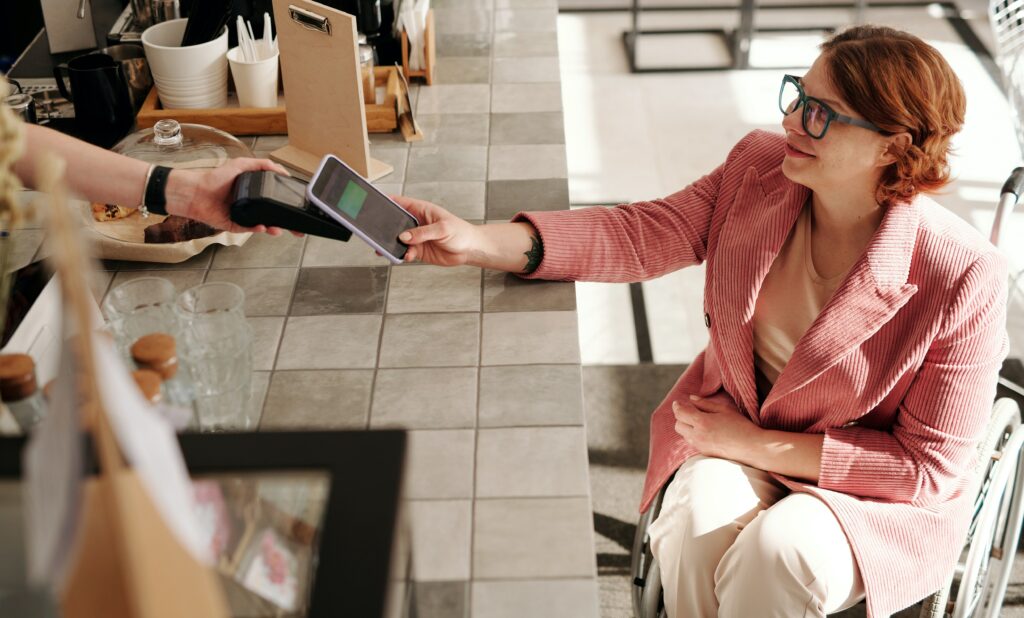Shopping malls are complex structures with various architectural features. They can be very complicated, especially for people with disabilities. For example, because there is more than one entrance and exit door, visually impaired people may have difficulty finding the store that they are looking while entering a different door, even if it is a place they have done before. Or, individuals in the wheelchair may not know that when they enter through different doors, whatever they go will be on the wheelchair-accessible road. For many reasons like these, it is very important to access all these complex structures.
As we have mentioned in our previous article, shopping malls should also be aimed at accessible places even before visitors visit the shopping mall. This process should begin before visitors to come back home and decide to end. For this reason, we can describe the design of the shopping mall as accessible places in 3 elements:
1) While visitors are still deciding to go
Before your visitors visit your shopping mall, they should go to your website to know if they can navigate comfortably there. If your website is not accessible or there is no information whether your shopping mall is accessible or not, people can hesitate to come to your shopping mall. As we explained in this blog post, you can make your website an accessible website. At the same time, you can include a section on your website where you explain the solutions and opportunities you have given in your shopping mall for people with disabilities.
You can also provide information about which stores are accessible here in your shopping mall. Apart from these, you can add a section how they will come to your shopping mall. In this section, you can share a lot of information such as what public transport they will use to reach your shopping mall, where they are coming by car, then the ramp is in parking, and in which part of the parking is an disabled car park.
2) After visiting the visitor
Your visitors have decided to come to your mall, but they have not come yet. In this process, you can support them to feel more independent and comfortable when you arrive. For example, the map of your shopping mall should be accessible from your visitors’ smartphones, while they are at home, and they should be able to see the locations of the shops they want to undergo this map. In fact, if you offer visually impaired navigation using beacons in your shopping mall, they can choose the door that they will enter and get navigation how they want to go to the shops that they want to go from there.
Especially in complex buildings, being able to navigate while living at home is very important for your disabled visitors. When they know which elevator or escalator is at home to use and learn the road to step by step of their destination for your smartphone while staying at home, they can navigate very comfortably when you come to your shopping mall. After deciding to travel, you should provide them all the necessary information so that they can feel comfortable when you come to your site.

3) When your visitors come to your shopping mall
It is very important that your employees at the information desk are enough to communicate with people with disabilities (such as knowing the sign language). They should be aware of the features provided within the mall, such as wheelchair access. When a disabled person asks for help, they should be able to give it. In addition to information desk staff, people who work in shops inside the shopping mall should be enough to communicate with people with disabilities. In addition, you can provide wheelchairs, amplifiers and more for your disabled visitors. As the inclusive city manufacturers explain in your article, if you provide amplifier assistance to your hearing-informed visitors, your visitors can fully understand the sales representative.
In addition, you can support many disabled people to help them download the applications that they can use in your shopping mall, such as our blinder application, in their smartphone so that they can navigate independently inside your shopping mall. For your wheelchair users, you can reduce locations such as information and payment points, and you can design a fitting room suitable for their use.
For your autistic visitors affected by noise, you can take noise reducing measures such as a small amount of music in shopping malls, using hand towels instead of hand dryers used in toilets, and cannot make unnecessary announcements. Keeping in mind an example of this mentioned: sensory Sunday. This means that every Sunday, all music in the normal area of the shopping mall is closed, and they ask retailers to reduce the volume to close music or make sensory awareness.

Shopping malls in Türkiye are ready to take a step to support the same and full participation of people with disabilities in social life. As poilabs, we are trying to support blindly impaired with solutions developed for them. More than thirty shopping malls are using our visually impaired solutions and trying to make their site accessible for all.


